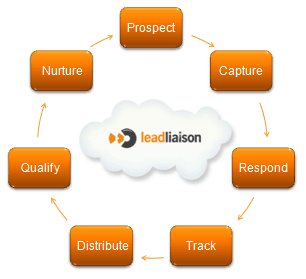The Marketing Automation Mistake
 There’s a big marketing automation mistake. The marketing automation industry is growing fast. At least $200M was spent acquiring marketing automation software over the past year. That’s a staggering figure considering the “marketing automation mistake”. If some very fundamental misnomers were avoided in the infancy stages then the market would not just grow, but grow rapidly.
There’s a big marketing automation mistake. The marketing automation industry is growing fast. At least $200M was spent acquiring marketing automation software over the past year. That’s a staggering figure considering the “marketing automation mistake”. If some very fundamental misnomers were avoided in the infancy stages then the market would not just grow, but grow rapidly.
Misnomer #1 – Marketing automation is a horrible name. Think about it. If I were a marketer and heard about marketing automation for the first time would I want to automate my job? If I did, I might not have a job. That’s like hiring your replacement. No one would volunteer for that. What these solutions do is automate very mundane or historically expensive tasks such as building web forms, landing pages or email marketing campaigns. Marketers no longer have to rely on creating html or 3rd party IT resources to get the job done. Now, they can do it on their coffee break. Marketers can visually build web forms and landing pages to easily wrap lead capture around any marketing campaign or event. These solutions also automate the process of following up with leads and building relationships with prospects over time via personalized and relevant communications- also known as “lead nurturing”.
Misnomer #2 – Lead scoring is a really poor term and misconstrues the real benefit of this feature. What lead scoring does is help sales and marketers automatically qualify prospects and/or customers. Why wouldn’t vendors call it “lead qualification” then? By using the term “lead scoring” it’s caused several other vendors in the space to follow suit and *only* score a lead. In reality, lead qualification is much more than just associating a number to a person. It’s about listening to what a prospect/customer wants and monitoring their overall engagement with your company. It’s much more meaningful to measure overall activity as well as key buy signals to properly qualify a lead.
Educators in the marketing automation space preach – “think like the buyer, not the seller”. I wish initial vendors in the space did just that. If they did, we wouldn’t be talking about “marketing automation” or “lead scoring”. Instead, we’d be talking about revenue generation and lead qualification – what matters to the buyer.
Weeding through the varying vernacular and various misnomers could lead to a serious headache. We side with advice from one of the industry’s top analysts, David Raab. If you’re looking for a solution from a vendor in this space do as David suggests:
…there’s just one right way to select software, and that’s to have vendors walk through scenarios based on how you plan to use it. – David Raab, Raab Associates Inc.
What mistakes have you seen in this space? What do you disagree with in this article? We’d love to hear from you.
To be alerted of future posts, please click on the RSS button.










